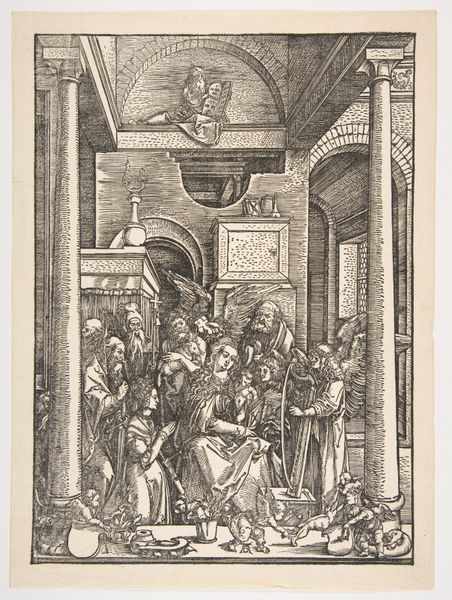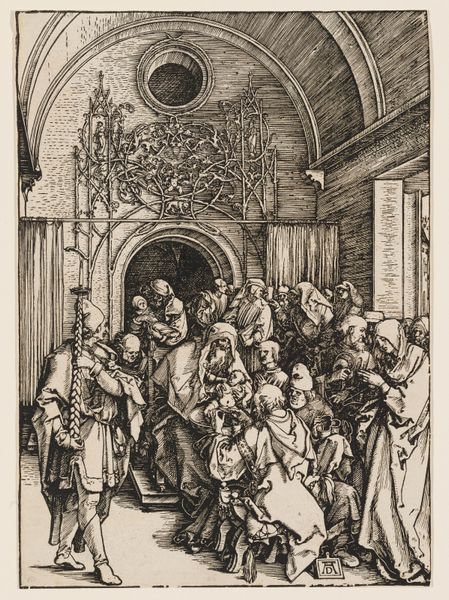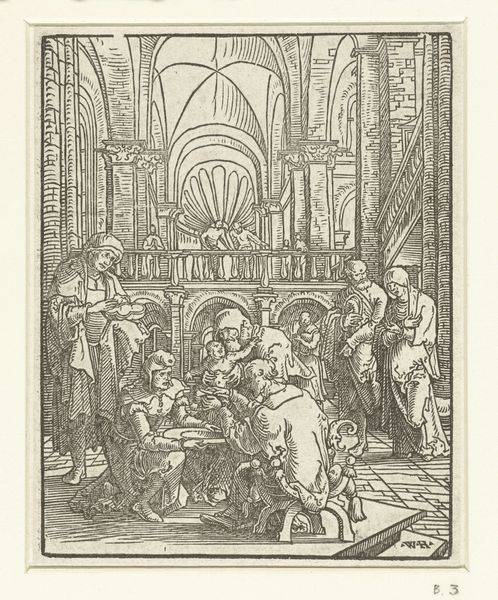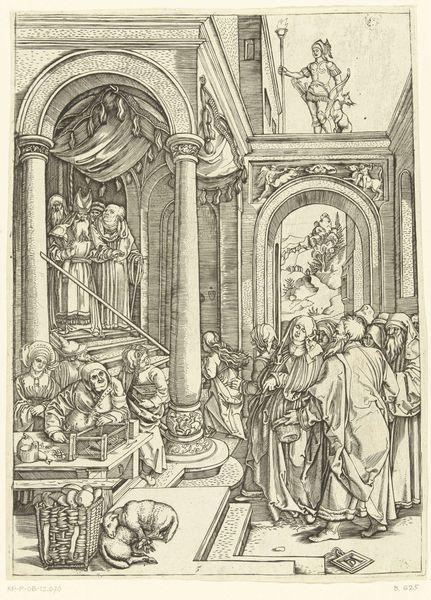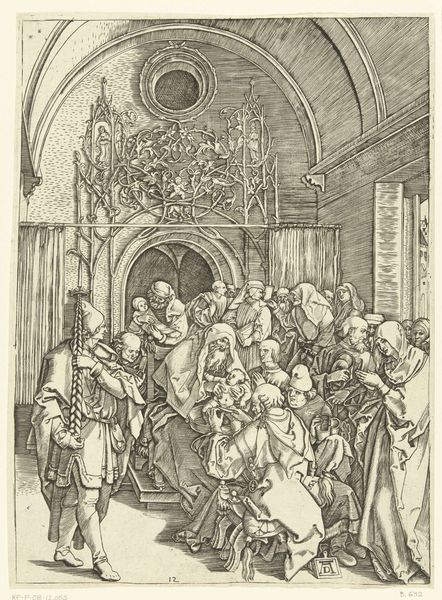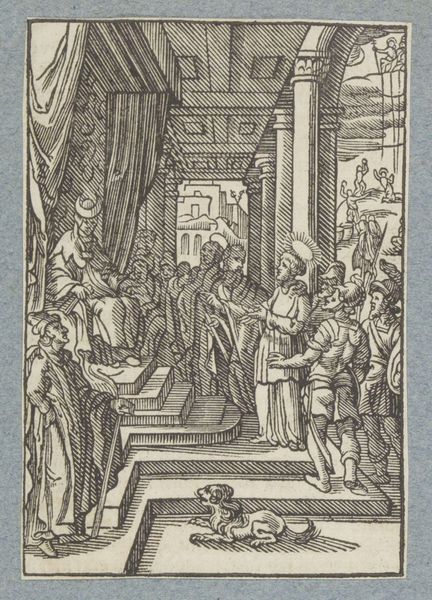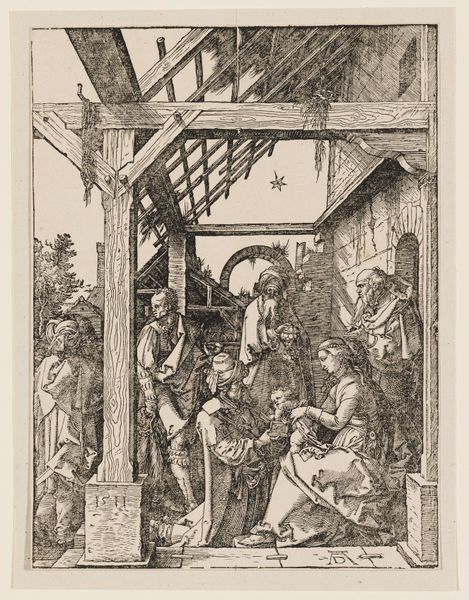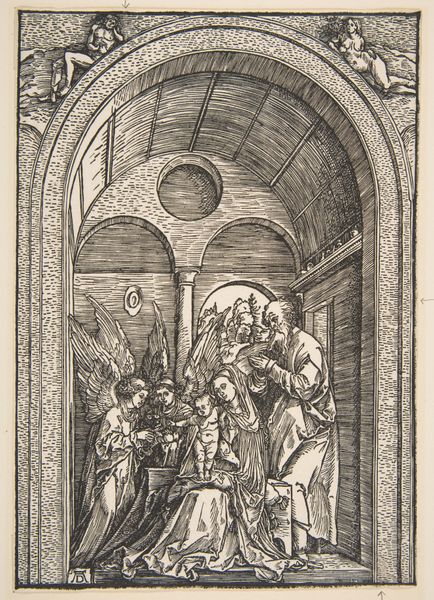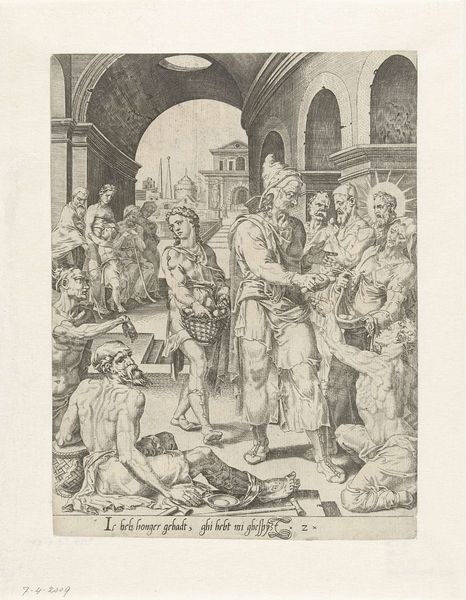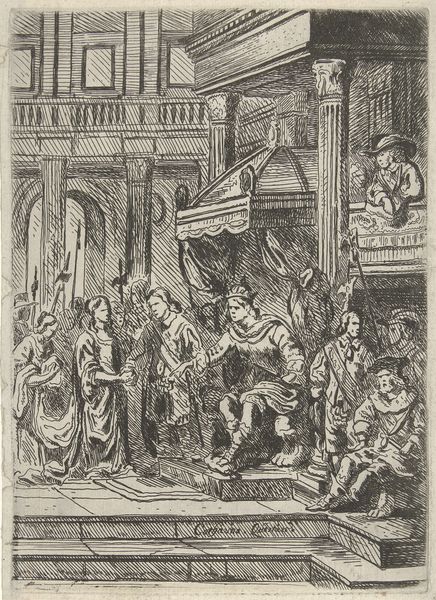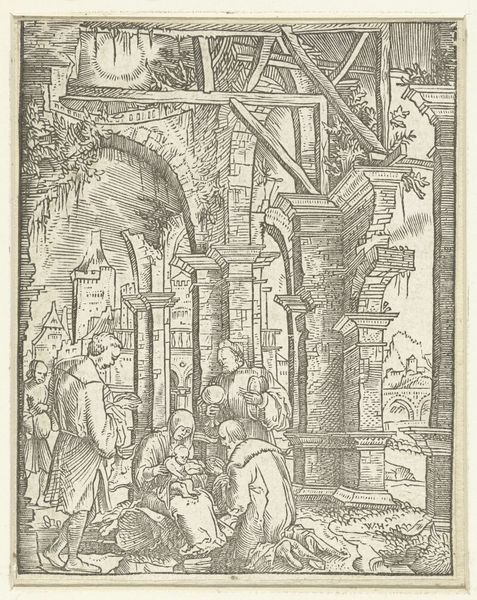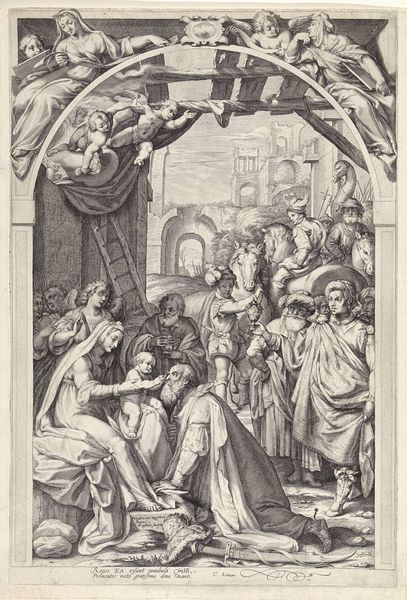
print, intaglio, engraving
#
allegory
#
narrative-art
#
pen drawing
# print
#
intaglio
#
figuration
#
line
#
history-painting
#
northern-renaissance
#
engraving
Dimensions: height 293 mm, width 213 mm
Copyright: Rijks Museum: Open Domain
Editor: Here we have Marcantonio Raimondi’s "Glorification of Mary," an engraving made sometime between 1510 and 1515. It’s incredibly detailed, almost overwhelming, with figures packed into the space. What's your take on it? Curator: Well, I immediately consider the socio-economic context of printmaking at the time. Raimondi was one of the first to commercially reproduce paintings; this engraving effectively democratized access to religious imagery. What effect do you think this might have had on the consumption of art? Editor: It’s fascinating to think about art becoming more accessible, but did that change how people valued the ‘original’ painting? Did it alter the perceived labor of the artist? Curator: Precisely! Consider the division of labor: Raimondi didn’t conceive the image; he reproduced it. He was, in essence, an artistic manufacturer. The market would shift with reproductive technologies, altering the value and function of art. Note the materiality; engravings such as these, widely accessible, are an artistic commodity reflecting economic transformation. Editor: I see your point. So it's not just about the religious narrative, but also about the process of making and distribution itself. It reframes the "Glorification" from a solely devotional object to a manufactured commodity. Curator: Exactly! We tend to overlook the physical creation and material conditions of older art, especially prints, to favor iconographic interpretations. These prints became an extension of the cultural and economic values of the time. Did the means of production somehow take agency from the artist? Is an artisan now just a craftsman? Editor: That gives me a whole new appreciation for prints! Thanks; that shifted my perspective quite a bit! Curator: Indeed! Examining the tools and trades of the period helps ground our understanding of both religious devotion and the economic engine driving artistic production.
Comments
No comments
Be the first to comment and join the conversation on the ultimate creative platform.
